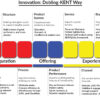
In Reliance’s annual general meeting, Mrs. Nita Ambani made the ambitious announcement: a Mumbai 2,000-bed Medical City devoted to the AI-era. Designed to bring together world-class specialists, AI-fortified diagnostics, and a teaching hospital, the development promises to be a landmark in the Indian private hospital experience. It’s undoubtedly an engineering marvel, integrating tech, scale, and prestige at the very same time.
But as the applause fades away, the larger question comes to the fore: are we celebrating the advancement of medicine or just the corporates’ widening footprints in the name of medicine?
Indian health care cannot be measured by bed numbers or by architecture or by robots. For the millions of Indians who are not able to afford two meals a day or minimum medicines in an inflation economy, care and accessibility and affordability and timely delivery—none of them translates to pomp or glamour.
The Medical Supercity Vision
It cannot be negated that a mega-scale health city integrating AI holds promise for:
1. Technology at Industrial Scale
Imaging made possible through AI, predictive analytics, and surgical robots can bring the standard of care to international levels. Large hospitals are in a position to take advantage of the most recent developments in diagnostics, oncology care, and transplantation and offer patients treatment unavailable anywhere in India.
2. Multidisciplinary Care Under One Roof
The hospital has 2,000 beds and several hundred specialties and can handle complex cases involving cross-specialty care. From cardiology to neurosurgery, the patients experience a “one-stop” process.
3. Teaching, Training, and Research Opportunities
The availability of a teaching hospital provides opportunities for medical education and research. Thousands of physicians, nurses, and allied specialists can be educated each year, reinforcing the healthcare workforce of India. Clinical trials and AI-enabled innovation can also establish India as a centre for global medical research.
4. Medical Tourism and Global Branding
A hospital of this scale can attract international patients seeking affordable yet high-quality care, boosting medical tourism revenues and India’s global healthcare reputation.
5. Employment and Economic Growth
Right from doctors and nurses to radiological and hospitality staff, the facility offers thousands of job opportunities not only to the hospital itself but to allied fields such as pharmaceuticals, diagnostics, and logistics.
The Pitfalls and Concerns
Yet, alongside the promise, lie serious concerns about whether such mega-projects align with India’s true healthcare needs.
1. Affordability vs. Accessibility
High-tech hospitals may mean high costs. For most Indian families—where out-of-pocket payments constitute close to 48% of all health expenditure—such equipment may be beyond their means. What does the presence of the robotic surgery facility matter when the patient cannot afford the simplest range of antibiotics?
2. Urban Concentration of Care
The construction of a 2,000-bed medical city in Mumbai anchors urban elite health care but doesn’t do much good in cities at the Tier-2 and Tier-3 level, where even a specialized ENT physician or a good quality CT scan machine may not readily be available. The health care inequity may get accentuated as the corporate giants focus on the urban cities and rural and small-town India takes a backseat.
3. Corporate Branding versus Patient-Centric Care
The risk is that medicine will be a brand war among hospitals one-upping one another in luxury infrastructure rather than clinical excellence. A gleaming lobby or glass façade impresses the investor and not very much to the concerned mother while she waits for the fever diagnosis for her child.
4. Absence of Primary and Preventive Care
India’s disease burden is transiting to chronic diseases like diabetes, hypertension, and cancer. Addressing them needs primary care networks and preventive programmes along with lifestyle interventions. A mega-hospital can be best at complex surgery but not much help at grass-roots level when it comes to preventing diseases.
5. Operational Complexity and Sustainability
It takes titanic resources to operate a 2,000-bed facility: skilled staff, cutting-edge management systems, and constant innovation. Even small inefficiencies in discharge, billing, or purchasing snowball into huge financial losses. Viability for such projects depends on consistently high occupancy rates and premium-paid patients—both unreliable in India’s highly segmented health-care universe.
Rethinking the Model
The challenge for the Indian health care system isn’t that of building glass towers but scale and inclusivity management. The following are the major questions asked:
Technology can be utilized for cutting costs rather than augmenting statements. Democratization of AI should be done to offer affordable and quick diagnostics and not the luxury service that only exists in urban health cities.
How do you empower decentralized entities? The small clinics, district hospitals, and telemedicine centers must be integrated in the health delivery system such that the Tier-2 and Tier-3 towns are not marginalized.
Can giant corporations and health systems collaborate? Instead of competing, partnerships can support country health plans such as Ayushman Bharat by pricing them lower for the masses.
How do you retain the soul of medicine? At the very heart of health care remains one doctor, one patient, and one moment of trust. You cannot lose empathy in the drive for scale, nor must you lose accessibility and affordability.
Conclusion: Beyond Glass Towers
Mumbai Reliance Medical City is a giant leap ahead in Indian health care and at the same time a reminder. Development surely cannot be summarized by the count of beds or the brilliance in architecture alone, only by the number of people whose families get timely and affordable and effective care.
India certainly needs state-of-the-art facilities. It also needs modestly run small-town clinics, good primary health centers with consistent medicines, and mid-scale hospitals with robust systems of referral. The future of health care isn’t a choice between one or the other; the future of health care is a balanced system in which innovation and empathy intersect. At the end of the day, hospitals will be “supercities,” but medicine always begins at the patient’s trust in the doctor. That, and not the number of beds, is the real currency of health care.
Dr. Prahlada N.B
MBBS (JJMMC), MS (PGIMER, Chandigarh).
MBA in Healthcare & Hospital Management (BITS, Pilani),
Postgraduate Certificate in Technology Leadership and Innovation (MIT, USA)
Executive Programme in Strategic Management (IIM, Lucknow)
Senior Management Programme in Healthcare Management (IIM, Kozhikode)
Advanced Certificate in AI for Digital Health and Imaging Program (IISc, Bengaluru).
Senior Professor and former Head,
Department of ENT-Head & Neck Surgery, Skull Base Surgery, Cochlear Implant Surgery.
Basaveshwara Medical College & Hospital, Chitradurga, Karnataka, India.
My Vision: I don’t want to be a genius. I want to be a person with a bundle of experience.
My Mission: Help others achieve their life’s objectives in my presence or absence!
My Values: Creating value for others.
Leave a reply
















Dear Dr. Prahlada N.B Sir,
Your thought-provoking blog post on India's healthcare supercities has left me pondering the true purpose of these mega-projects. While the Reliance Medical City in Mumbai, with its 2,000 beds and cutting-edge technology, is undoubtedly an architectural marvel, it's crucial we don't forget the millions of Indians who struggle to afford basic healthcare.
As you aptly pointed out, healthcare in India can't be measured solely by bed numbers or luxurious infrastructure. The real challenge lies in making quality healthcare accessible and affordable for all. We need to ensure that these supercities don't become elitist enclaves, catering only to the privileged few.
Imagine if the Reliance Medical City became a hub for innovation, where AI-powered diagnostics and advanced medical technology are leveraged to benefit not just the rich but also the poorest of the poor. It's like hosting Anant Ambani's iconic wedding ceremony, but instead of A-list celebrities, we invite the most vulnerable members of our society to partake in the benefits of world-class healthcare.
The concerns you've raised about affordability, urban concentration of care, and corporate branding versus patient-centric care are valid and warrant serious consideration. Perhaps it's time to rethink the model and focus on democratizing AI, empowering decentralized entities, and fostering partnerships that support country health plans like Ayushman Bharat.
As you said, the future of healthcare lies in striking a balance between innovation and empathy. Let's ensure that these supercities become beacons of hope for the marginalized and underserved, rather than mere status symbols for the wealthy.
Kudos to you, Sir, for sharing your insightful thoughts on this critical issue. Your dedication to creating value for others is truly inspiring.
Warm regards,
🙏
P.S. I'm reminded of the phrase "Good is the enemy of great." Let's strive for greatness in our pursuit of equitable healthcare for all.
Reply